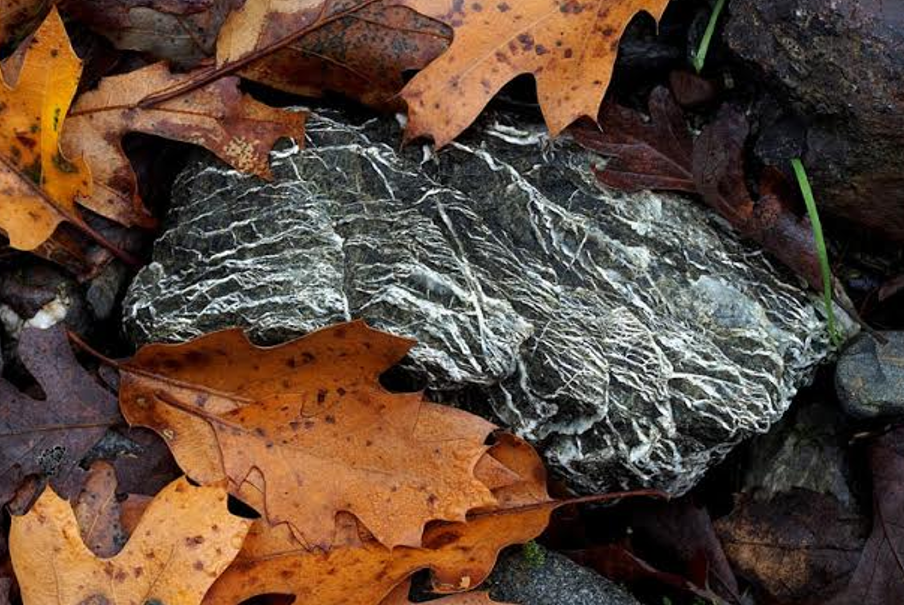Tuleyome's Science Corner: Serpentinite, Biodiversity, and Deep History

Serpentinite in Cedar Roughs Wilderness by Jim Rose
What does ancient seafloor have to do with plant diversity? Serpentinite, the California state rock, ties the two together.
If you’ve driven along the western shore of Lake Berryessa or along Highway 20 through the Coast Ranges, you’ve seen outcrops of blueish-green serpentinite, named for the scaly look of the rock. You may know it as serpentine. It started out as peridotite, part of the earth’s mantle, forming the basement of the seafloor; at some point water infiltrated it, changing its structure and giving it the sheet-like mineral structure that makes its scales. In the slow tectonic tumult that created California, bands of serpentinite traveled from the very bottom of the seafloor to the surface of the earth, in the Coast Ranges, the Klamath mountains, and the Sierra foothills.
Serpentinite is considered an “ultramafic” rock, very high in magnesium and iron. It fractures easily and weathers to a soil that, like its parent rock, is low in calcium and potassium, two important plant nutrients. The soil may also contain high amounts of chromium, cobalt, and nickel, which are toxic to plants in quantity. In summer the soil is hot and dry and inhospitable.
Yet plants grow in it, adapted not only to the drought and the lack of nutrients but also to the toxic metals. Serpentinite gives rise to over 10% of the endemic flora that make California a biological hotspot. Because few plants can tolerate serpentine soils, the plants that do are somewhat protected from competition and from invasive weeds (with barbed goatgrass, Aegilops triuncialis, being a notable, noxious exception). Over 200 California species are serpentine specialists that grow nowhere else, unable to compete on more fertile soils. Serpentine soils only cover about 1% of California’s area, so it is no surprise that some of these plants are rare, sensitive, or threatened.
California’s serpentinite and serpentine soils are important for science as well. Because serpentine areas are in a sense islands within other soils, they provide natural laboratories for studying evolution and the genetic drift that creates new species. An entire book edited by local professor Susan Harrison, one of the leading researchers on serpentine ecology, has been written on the fundamental insights that scientists have gained from serpentine areas, on topics that include microbial adaptation to harsh environments, plant-animal interactions, and ecosystem responses to climate change—among others.
Serpentinite forms the base of an ophiolite, a sequence of former seafloor rocks such as basaltic pillow lavas and chert that often occur together and reveal how the seafloor was formed. Ophiolites have been tremendously important in understanding plate tectonics and how the continents have moved. In “A Personal History of the Ophiolite Concept,” Eldridge Moores, renowned geologist and friend of Tuleyome, has written “Ophiolites were a major topic of discussion at the Penrose conference” he attended in 1969, where “geology was transformed” and plate tectonics became the leading theory for how continents form and move. Ophiolites also gave him the insight that the confusing geology of California could be explained by islands accreting against the North American continental plate.
The Berryessa Snow Mountain National Monument is rich in serpentinite and ophiolitic outcrops. The proposed Molok Luyuk addition contains several areas of serpentine soils that are rich in rare and threatened plants, outcrops of serpentinite boulders, and other members of ophiolites. It is a great place to see and understand not only the uniqueness of California but also the mechanisms of evolution, the complexity of ecosystems, and the grandeur of geology.
-Amy Boyer
RECENT ARTICLES






